Apple Inc is exploring new sources of the memory chips that go into iPhones, including its first Chinese producer of the critical component, after a disruption at a key Japanese partner exposed the risks to its global supply.
It is considering expanding a roster of suppliers that already includes Micron Technology Inc and Samsung Electronics Co after Kioxia Holdings Corp in February lost a batch of output to contamination, people familiar with the matter said.
While Samsung and SK Hynix Inc — the world’s largest makers of flash memory — are likely to pick up the slack, Apple remains keen to diversify its network and offset the risk of further disruption from the COVID-19 pandemic and shipping snarls, they said.
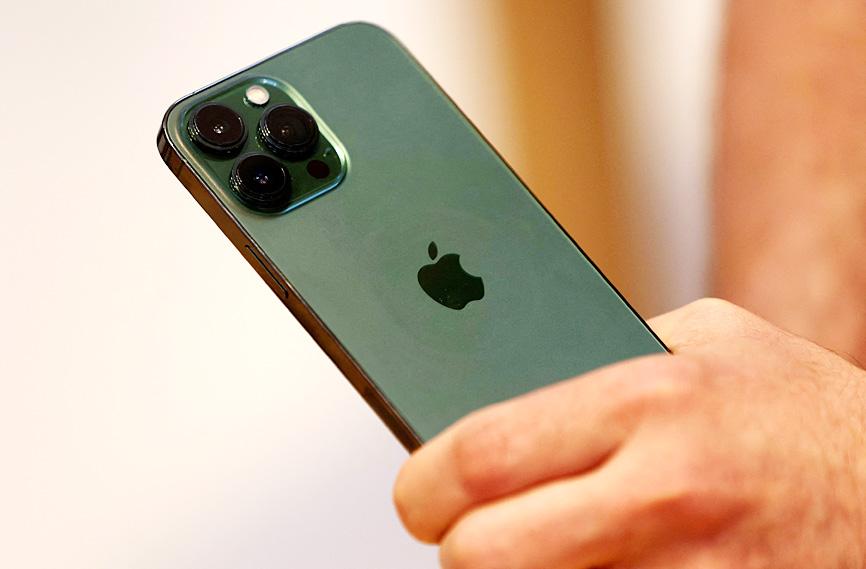
Photo: Reuters
The iPhone maker is testing sample NAND flash memory chips made by Hubei-based Yangtze Memory Technologies Co (長江存儲), the people said, asking not to be identified discussing private deliberations.
Apple has been discussing the tie-up with Yangtze, owned by Beijing-backed chipmaking champion Tsinghua Unigroup Co (清華紫光), for months, but no final decisions have been made.
A contract for Yangtze and its well-connected parent would be a milestone for China’s ambitions to build a world-class domestic chip industry that can compete with the US.
For semiconductor players aspiring to build a business on a national scale, memory is typically a gateway, because production capabilities count more than the intricate designs needed for advanced processors and other logic chips — though it requires enormous investment to sustain.
Tying up with Yangtze could open Apple to criticism back home given ties between Washington and Beijing are fraying over China’s ambiguous stance on the Ukraine war, as well as US efforts to contain its technological ascent. US lawmakers have long railed against the way Beijing champions and subsidizes local industry.
Created through a merger with a government-run chip factory in 2016, Yangtze Memory is regarded as China’s best shot at designing and developing homegrown 3D NAND flash memory, widely used for storing data in smartphones, laptops, servers and future gadgets, such as electric vehicles. Beijing regards the crucial component as one of the bottlenecks that could endanger its economy, because of a heavy reliance on imports.
The testing and discussions are no guarantee Yangtze chips will ultimately ship. It is unclear if the Chinese firm can convince Apple of its dependability, the people said.
Yangtze Memory technology is at least one generation behind and could at best be a backup choice to Apple’s main suppliers like Hynix and Samsung, they said. Even if Apple qualifies Yangtze’s components, it will need to gauge its reliability in terms of yields and quality. It took years for Beijing-based BOE Technology Group Co, another prominent Chinese Apple supplier, to reach high-volume production of iPhone displays.
Yet because memory chips are largely commoditized, Apple could conceivably decide to use Yangtze’s product in lower-end devices, such as the iPhone SE, the people said.
Apple’s iPhones are put together primarily in China by Foxconn Technology Group (富士康科技集團) and Pegatron Corp (和碩), which take components like memory chips from scores of different providers before assembling them into the final device. Yangtze Memory could offer an attractive source of cheaper chips close to their plants.
“Yangtze memory will supply about 5 percent of memory for iPhone SE, and 3 percent to 5 percent of memory for the upcoming iPhone 14. Apple is using its product because it offers competitive pricing,” said Jeff Pu (蒲得宇), an analyst with Haitong International Securities (海通國際證券), working off theoretical estimates.
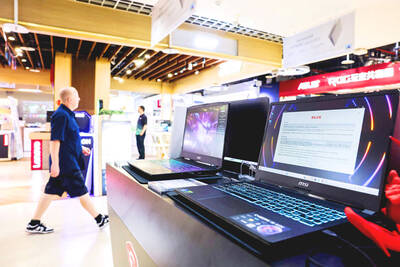
IN THE AIR: While most companies said they were committed to North American operations, some added that production and costs would depend on the outcome of a US trade probe Leading local contract electronics makers Wistron Corp (緯創), Quanta Computer Inc (廣達), Inventec Corp (英業達) and Compal Electronics Inc (仁寶) are to maintain their North American expansion plans, despite Washington’s 20 percent tariff on Taiwanese goods. Wistron said it has long maintained a presence in the US, while distributing production across Taiwan, North America, Southeast Asia and Europe. The company is in talks with customers to align capacity with their site preferences, a company official told the Taipei Times by telephone on Friday. The company is still in talks with clients over who would bear the tariff costs, with the outcome pending further
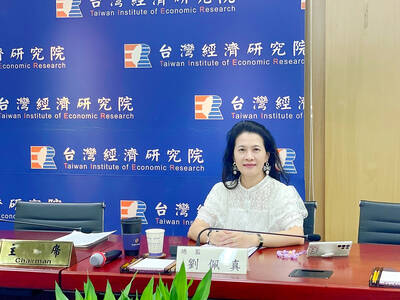
A proposed 100 percent tariff on chip imports announced by US President Donald Trump could shift more of Taiwan’s semiconductor production overseas, a Taiwan Institute of Economic Research (TIER) researcher said yesterday. Trump’s tariff policy will accelerate the global semiconductor industry’s pace to establish roots in the US, leading to higher supply chain costs and ultimately raising prices of consumer electronics and creating uncertainty for future market demand, Arisa Liu (劉佩真) at the institute’s Taiwan Industry Economics Database said in a telephone interview. Trump’s move signals his intention to "restore the glory of the US semiconductor industry," Liu noted, saying that
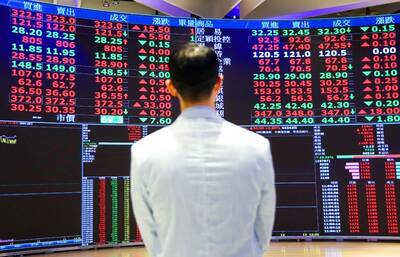
STILL UNCLEAR: Several aspects of the policy still need to be clarified, such as whether the exemptions would expand to related products, PwC Taiwan warned The TAIEX surged yesterday, led by gains in Taiwan Semiconductor Manufacturing Co (TSMC, 台積電), after US President Donald Trump announced a sweeping 100 percent tariff on imported semiconductors — while exempting companies operating or building plants in the US, which includes TSMC. The benchmark index jumped 556.41 points, or 2.37 percent, to close at 24,003.77, breaching the 24,000-point level and hitting its highest close this year, Taiwan Stock Exchange (TWSE) data showed. TSMC rose NT$55, or 4.89 percent, to close at a record NT$1,180, as the company is already investing heavily in a multibillion-dollar plant in Arizona that led investors to assume
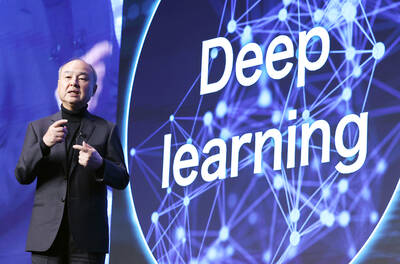
AI: Softbank’s stake increases in Nvidia and TSMC reflect Masayoshi Son’s effort to gain a foothold in key nodes of the AI value chain, from chip design to data infrastructure Softbank Group Corp is building up stakes in Nvidia Corp and Taiwan Semiconductor Manufacturing Co (TSMC, 台積電), the latest reflection of founder Masayoshi Son’s focus on the tools and hardware underpinning artificial intelligence (AI). The Japanese technology investor raised its stake in Nvidia to about US$3 billion by the end of March, up from US$1 billion in the prior quarter, regulatory filings showed. It bought about US$330 million worth of TSMC shares and US$170 million in Oracle Corp, they showed. Softbank’s signature Vision Fund has also monetized almost US$2 billion of public and private assets in the first half of this year,